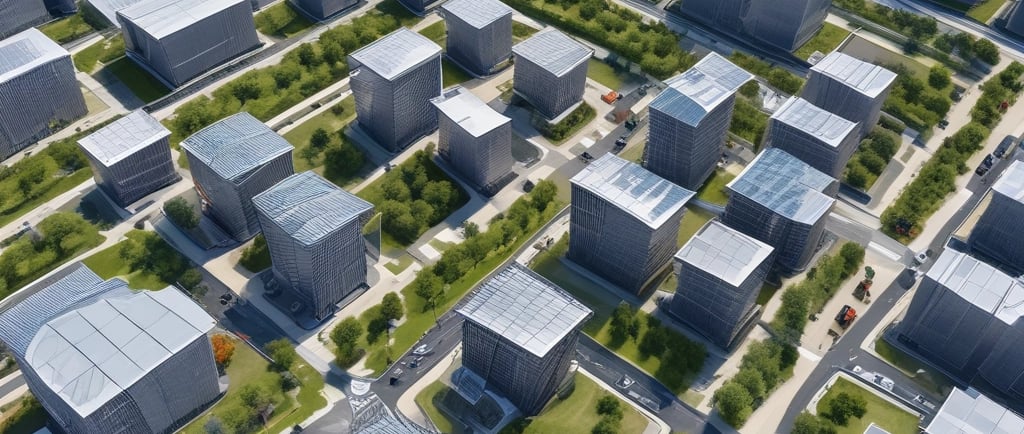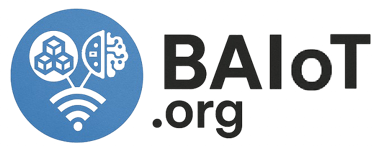Case Study Proposal: Autonomous Carbon Markets for Urban Microgrids
BAIoT.org proposes autonomous carbon markets for urban microgrids using Blockchain, AI, and IoT to enable real-time, decentralized carbon credit trading, empowering cities to drive transparent, scalable, and inclusive climate action.
10/4/20254 min read


Case Study Proposal: Autonomous Carbon Markets for Urban Microgrids
Reimagining Climate Action with Blockchain, AI, and IoT
Presented by BAIoT.org
Executive Summary
Cities are responsible for over 70% of global carbon emissions, yet they also hold the greatest potential for climate innovation. As urban centers transition to renewable energy and decentralized infrastructure, a new challenge emerges: how to measure, verify, and incentivize carbon reduction at the local level — in real time, and at scale.
This case study proposal introduces a disruptive initiative by BAIoT.org to pilot Autonomous Carbon Markets for Urban Microgrids. By integrating Blockchain, Artificial Intelligence (AI), and the Internet of Things (IoT), this system enables buildings, neighborhoods, and energy producers to trade verified carbon credits autonomously, based on real-time emissions data. The result is a dynamic, transparent, and decentralized carbon economy that empowers cities to lead the fight against climate change.
1. The Challenge: Carbon Accounting Is Broken
Despite the urgency of climate action, carbon markets remain slow, opaque, and centralized. Traditional carbon credit systems suffer from:
Delayed verification: Emissions reductions are often reported months or years after they occur.
High transaction costs: Brokers, auditors, and registries add layers of complexity and expense.
Limited accessibility: Small-scale actors — like buildings, local utilities, or community solar projects — are excluded from participating.
Trust issues: Fraud, double-counting, and unverifiable claims undermine confidence in carbon offsets.
Lack of granularity: Emissions data is aggregated at national or corporate levels, ignoring local dynamics.
As cities adopt microgrids, rooftop solar, battery storage, and smart buildings, they generate real-time data that could revolutionize carbon accounting — if harnessed correctly.
2. The BAIoT.org Solution: Autonomous Carbon Markets
BAIoT.org proposes a pilot project in collaboration with a forward-thinking city (e.g., Singapore, Amsterdam, or Kigali) to deploy an Autonomous Carbon Market Platform for urban microgrids. The platform uses Blockchain, AI, and IoT to create a decentralized, real-time carbon economy where verified emissions reductions are tokenized and traded automatically.
2.1 IoT for Real-Time Emissions Monitoring
Smart meters track electricity generation and consumption at the building and grid level.
Environmental sensors measure air quality, temperature, and carbon intensity.
Energy asset telemetry from solar panels, batteries, and EV chargers provides granular data on clean energy flows.
Edge computing ensures low-latency processing and local decision-making.
This data forms the foundation for real-time carbon accounting — with precision and transparency.
2.2 AI for Verification and Optimization
Carbon attribution models calculate emissions reductions based on energy source, time of use, and grid mix.
Anomaly detection flags suspicious data or potential fraud.
Market optimization algorithms match buyers and sellers of carbon credits based on price, location, and impact.
Forecasting tools predict future emissions and credit availability to stabilize the market.
AI ensures that credits are verified, valuable, and aligned with climate goals.
2.3 Blockchain for Trust and Automation
Tokenized carbon credits are issued as NFTs or smart assets, each linked to a verified emissions reduction.
Smart contracts automate trading, settlement, and retirement of credits.
Decentralized registries store immutable records of emissions, transactions, and ownership.
Interoperability protocols connect with national and global carbon markets.
Blockchain eliminates intermediaries, reduces costs, and builds trust in the system.
3. Expected Outcomes
This pilot aims to demonstrate how autonomous carbon markets can accelerate urban decarbonization and democratize climate finance.
3.1 Environmental Impact
Increased adoption of clean energy and energy efficiency.
Real-time visibility into emissions reductions.
Verified, high-integrity carbon credits that reflect actual impact.
3.2 Economic Empowerment
New revenue streams for buildings, communities, and microgrid operators.
Lower barriers to entry for small-scale climate actors.
Dynamic pricing and liquidity in local carbon markets.
3.3 Systemic Innovation
Shift from centralized to decentralized carbon accounting.
Integration of climate action into everyday urban infrastructure.
Scalable model for cities worldwide.
4. Strategic Alignment with BAIoT.org’s Mission
This initiative embodies BAIoT.org’s commitment to ethical, inclusive, and impactful technology convergence:
Ethical: Credits are verified transparently, with no greenwashing or exploitation.
Inclusive: Small buildings, communities, and local utilities can participate.
Impactful: Real-time data drives real-world climate outcomes.
Collaborative: Cities, technologists, and citizens co-create the future of carbon markets.
5. Implementation Roadmap
Phase 1: Stakeholder Engagement and Planning
Partner with a city government, energy utility, and local tech ecosystem.
Identify pilot zones (e.g., smart neighborhoods, business districts).
Define carbon accounting methodologies and regulatory alignment.
Phase 2: Infrastructure Deployment
Install IoT sensors and smart meters across pilot sites.
Develop AI models for carbon attribution and market optimization.
Set up blockchain infrastructure and token standards.
Phase 3: Market Launch
Issue tokenized carbon credits based on verified emissions reductions.
Enable automated trading via smart contracts.
Onboard buyers (e.g., corporations, individuals, NGOs) and sellers (e.g., buildings, microgrids).
Phase 4: Monitoring and Evaluation
Track key metrics: emissions reduced, credits traded, revenue generated.
Conduct audits and publish open-source methodologies.
Refine models and expand to additional zones.
6. Risk Management and Mitigation
Technical Risks
Sensor failure or data gaps: Mitigated through redundancy and edge processing.
AI model bias: Addressed through transparent training data and validation.
Market Risks
Price volatility: Stabilized through forecasting and liquidity pools.
Low participation: Boosted through incentives and education.
Governance Risks
Regulatory uncertainty: Managed through early engagement and compliance frameworks.
Data privacy concerns: Mitigated through encryption and user consent protocols.
7. Broader Impact and Replicability
This pilot is designed to be scalable across cities and regions. By using open standards, modular architecture, and community governance, autonomous carbon markets can be replicated in:
Smart cities with existing IoT infrastructure.
Developing urban centers seeking climate finance.
Corporate campuses and eco-industrial parks.
It also supports multiple Sustainable Development Goals (SDGs), including:
SDG 7: Affordable and Clean Energy
SDG 11: Sustainable Cities and Communities
SDG 13: Climate Action
8. Call to Action
Carbon markets must evolve — from slow, centralized systems to agile, decentralized networks. By empowering cities to measure, verify, and trade emissions reductions in real time, we unlock a new era of climate action: one that is local, transparent, and inclusive.
BAIoT.org invites cities, technologists, researchers, and funders to join us in building the future of carbon markets. Together, we can turn every building, microgrid, and neighborhood into a climate asset.
Ways to Get Involved
Partner with us to pilot autonomous carbon markets in your city.
Contribute to open-source development of carbon accounting tools and smart contracts.
Sponsor community engagement and education programs.
Join our global coalition for ethical climate innovation.
Visit BAIoT.org to learn more, access resources, and become part of this transformative movement.
Conclusion
This case study proposal presents a disruptive vision: a world where carbon markets are not just financial instruments, but living systems embedded in the fabric of our cities. By combining Blockchain, AI, and IoT, we can create autonomous carbon economies that reward real impact, empower local actors, and accelerate the transition to net zero.
BAIoT.org is ready to lead this change. Are you ready to join us?
Advocate
Pioneering the convergence of blockchain, AI, and IoT.
Connect
Support
Copyright © 2025 BAIoT.org. All rights reserved.
